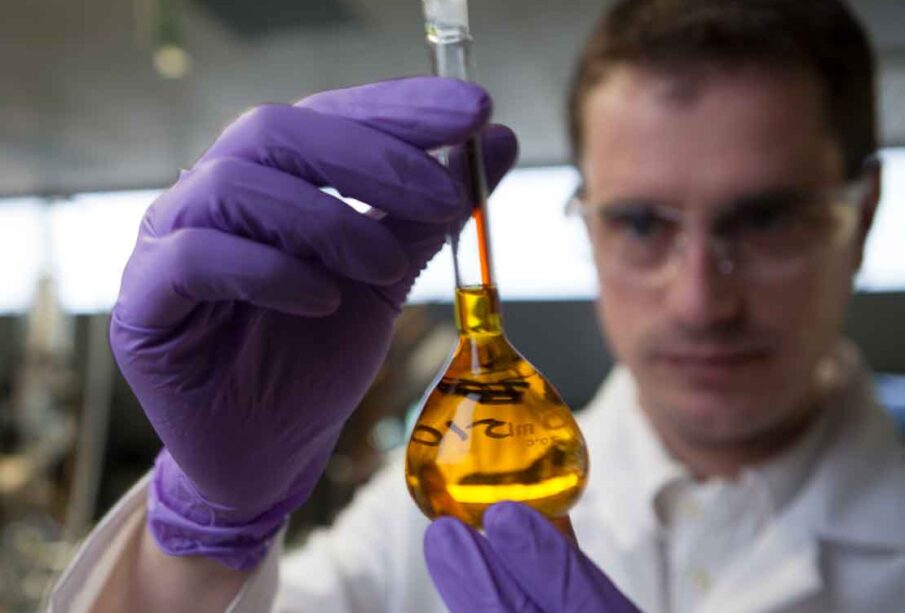What is the chemistry behind cleaning?

In our day to day activities, we come across several cleaning agents like soaps, detergents, wash liquids and many more. The main motto of these is to clean the surface or remove the dirt or oil present on the surface. Have you ever wondered how these substances work? What is the chemistry behind these cleaning agents? In this article, you will find answers to all the questions that strike your mind regarding the cleaning process.
What are surfactants?
All the cleaning agents like soaps, detergents, wash liquids are cumulatively called surfactants. The word surfactant comes from a surface-active agent. These are also referred to as amphiphiles or tensides. These are the molecules that reduce surface tension and have a different molecular structure that yields their molecular properties. Surface active agents are a peculiar class of chemical compounds possessing dual characteristics of hydrophilicity and hydrophobicity.
Classification
The classification of surfactants is done on four broad categories
- Anionic Surfactants: The compound that produces a negatively charged surfactant ion on its hydrophilic end. Examples are phosphoric acid esters, and carboxylic acid salts.
- Cationic Surfactants: The compound that produces a positively charged surfactant ion on its hydrophilic end. Examples include benzalkonium, benzethonium etc.
- Amphoteric or Zwitterionic: When an individual surfactant molecule exhibits both anionic and cationic dissociations it is known as amphoteric or zwitterionic. Example: Betaines, coco alkyl dimethyl etc.
- Nonionic Surfactants: The molecules that possess hydrophilic head groups that do not ionize appreciably in water. Examples include alcohol ethoxylates, alkanol amides etc.
Composition
The surface-active agents are mainly composed of phospholipids, protein and neutral lipids, essentially cholesterol. They have many organic molecules like alcohols, ethers, ethene and so on. Do you know what are ethoxylated surfactants? These are synthesised from the reaction of fatty alcohol and ethylene oxide. In this manner, there are several soaps and detergents with variant compounds, composition and structure. But the primary nature of all these compounds is to cleanse the surface.
Mechanism of cleaning
Surface active agents perform their function by distributing the interface between oils or dirt and water. The oil and dirt adhere in suspension working in their removal. Surfactants act in this manner so that they are incorporated in a hydrophilic group such as an acid anion and a hydrophobic group like an alkyl chain. Water molecules tend to converge close to the latter. The polar part displays a strong affinity for polar solvents, especially water, and it is often called the hydrophilic part or hydrophile. The apolar part is known as hydrophobe or lipophile. Surfactants are majorly amphiphilic organic compounds that contains both hydrophobic groups (which act as their tails) and hydrophilic groups (which act as their heads). Hence, a surfactant molecule consists of both a water-insoluble component as well as a water-soluble component. The tail of most surfactants comprises a hydrocarbon chain.
Applications
A wide range of applications of these surface-active agents can be seen in today’s chemical world. Listed below are few applications of these
- Solubilization: Surfactants allow insoluble or poorly soluble materials to get mixed or dissolved easily.
- Emulsification: This helps in the preparation of food products such as – Mayonnaise, dairy products etc.
- Foaming: Foaming systems comprises gas bubbles caught in a liquid or solid, while foam extinguishers belong to substances and mixtures that destabilize and reduce foam.
- Detergents: Detergents are substances that eliminate dirt, grease, oils etc from various surfaces. They are regularly used as cleaning products on surfaces, clothes, machines etc.
Surface active agents are in extensive use nowadays as it cleanses easily and reduces effort. The soaps, detergents, wash liquids and washing powders all have their own characteristics and stand unique in their nature. These products differ only in their chemical composition. The composition may vary with quantity, chemicals used and the manufacturing process. Yet, all these serve as cleaning agents.
.









